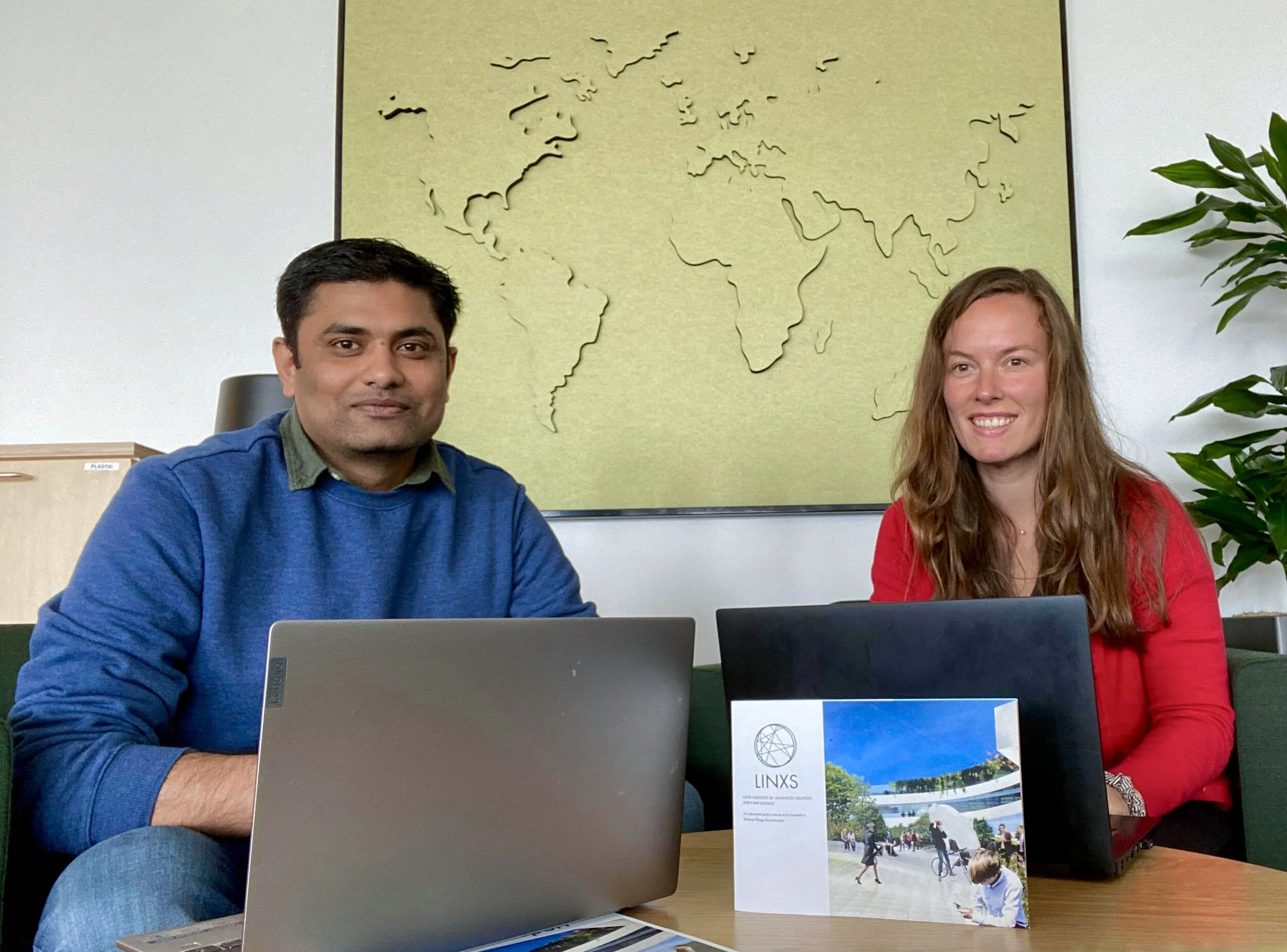LINXS Webinar Series - Let's Dive Into the Atoms!
LINXS is launching a new webinar series introducing x-rays and neutrons from a methods perspective. The aim is to create a fundamental understanding of how you as a researcher can use the techniques offered by MAX IV and ESS in your own research.
– Through the webinars, we aim to present that the possibilities with x-rays and neutrons are endless; you can analyze brain tissue, viruses, bones, organic matter and much more, says Veronica Lattanzi, PhD-student at Biochemistry and Structural Biology at Lund University, LINXS board member, and one of the moderators of the webinars.
Anurag Kawde and Veronica Lattanzi, moderators of the LINXS webinar series, Let’s Dive Into the Atoms!
The webinar series comprise of a range of lectures followed by questions and answers on x-ray and neutron techniques. Each webinar will start with a general overview of the technique and then an in-depth example of how a certain expert have made use of the technique.
The content of the webinar series is partly based on some of the issues that many researchers are curious about when it comes to x-ray and neutron techniques: how to write a beam-line proposal; how to prepare laboratory samples; and what types of techniques work for different research questions.
– Thanks to large scale facilities, one can explore for example biological phenomenon- just like solving the structure of the current corona virus for drug-discovery purposes - and study them at nano- or atomic level. The webinars will provide researchers with guidelines from experts in different fields on how to address the limitations we normally face in our labs by highlighting different methods and approaches, says Veronica Lattanzi.
Anurag Kawde, webinar moderator and post-doc at LINXS, adds that the pedagogic aspect of the webinars are important.
– In other courses, I have missed a straightforward introduction to various techniques. I think this educational aspect is really key to get people to understand how they themselves can apply the techniques to their own work.
The webinars are also part of LINXS ongoing work to establish a strong user community in x-rays and neutrons, and to bring different groups and researchers together.
– We want to attract both people who are already using the techniques, and people who have never used x-rays and neutrons before, says Anurag Kawde.
The webinars are targeted at researchers from around the world. No in-depth knowledge of x-rays and neutron methods is needed.
The seminars will run from 3rd June to 29th June,

